Android 无障碍服务 performAction 的调用过程分析
Posted 小陈乱敲代码
tags:
篇首语:本文由小常识网(cha138.com)小编为大家整理,主要介绍了Android 无障碍服务 performAction 的调用过程分析相关的知识,希望对你有一定的参考价值。
无障碍服务可以模拟一些用户操作,无障碍可以处理的对象,通过类 AccessibilityNodeInfo 表示,通过无障碍服务,可以通过它的 performAction 方法来触发一些 action ,包括:
ACTION_FOCUS // 获取焦点
ACTION_CLEAR_FOCUS // 清除焦点
ACTION_SELECT // 选中
ACTION_CLEAR_SELECTION // 清除选中状态
ACTION_ACCESSIBILITY_FOCUS // 无障碍焦点
ACTION_CLEAR_ACCESSIBILITY_FOCUS // 清除无障碍焦点
ACTION_CLICK // 点击
ACTION_LONG_CLICK // 长按
ACTION_NEXT_AT_MOVEMENT_GRANULARITY // 下一步移动
ACTION_PREVIOUS_AT_MOVEMENT_GRANULARITY // 上一步移动
ACTION_NEXT_html_ELEMENT // 下一个 html 元素
ACTION_PREVIOUS_HTML_ELEMENT // 上一个 html 元素
ACTION_SCROLL_FORWARD // 向前滑动
ACTION_SCROLL_BACKWARD // 向后滑动
他们都可以通过 performAction 方法进行处理:
// in AccessibilityNodeInfo
public boolean performAction(int action)
enforceSealed();
if (!canPerformRequestOverConnection(mConnectionId, mWindowId, mSourceNodeId))
return false;
AccessibilityInteractionClient client = AccessibilityInteractionClient.getInstance();
return client.performAccessibilityAction(mConnectionId, mWindowId, mSourceNodeId,
action, null);
在这个方法中,第一步是检查 perform 是否可以通过 connection 请求,这里 connection 检查是根据通过 binder 通信传递过来的 id 检查连接是否正常。 然后通过 AccessibilityInteractionClient 对象,调用它的 performAccessibilityAction 方法去进行实际操作的。
AccessibilityInteractionClient
这个类是一个执行可访问性交互的单例,它可以根据 View 的快照查询远程的 View 层次结构,以及通过 View 层次结构,来请求对 View 执行某项操作。
基本原理:内容检索 API 从客户端的角度来看是同步的,但在内部它们是异步的。客户端线程调用系统请求操作并提供回调以接收结果,然后等待该结果的超时。系统强制执行安全性并将请求委托给给定的视图层次结构, 在该视图层次结构中发布消息(来自 Binder 线程),描述 UI 线程要执行的内容,其结果是通过上述回调传递的。但是,被阻塞的客户端线程和目标视图层次结构的主 UI 线程可以是同一个线程,例如无障碍服务和 Activity 在同一个进程中运行,因此它们在同一个主线程上执行。 在这种情况下,检索将会失败,因为 UI 线程在等待检索结果,会导致阻塞。 为了避免在进行调用时出现这种情况,客户端还会传递其进程和线程 ID,以便访问的视图层次结构可以检测发出请求的客户端是否正在其主 UI 线程中运行。 在这种情况下,视图层次结构,特别是对它执行 IPC 的绑定线程,不会发布要在 UI 线程上运行的消息,而是将其传递给单例交互客户端,通过该客户端发生所有交互,后者负责执行开始等待通过回调传递的异步结果之前的消息。在这种情况下,已经收到预期的结果,因此不执行等待。
上面是官方备注的描述,大概意思最好不要在主线程执行检索操作。
继续跟进它的 performAccessibilityAction 方法:
public boolean performAccessibilityAction(int connectionId, int accessibilityWindowId,
long accessibilityNodeId, int action, Bundle arguments)
try
IAccessibilityServiceConnection connection = getConnection(connectionId);
if (connection != null)
final int interactionId = mInteractionIdCounter.getAndIncrement();
final long identityToken = Binder.clearCallingIdentity();
final boolean success;
try
success = connection.performAccessibilityAction(
accessibilityWindowId, accessibilityNodeId, action, arguments,
interactionId, this, Thread.currentThread().getId()); // 【*】
finally
Binder.restoreCallingIdentity(identityToken);
if (success)
return getPerformAccessibilityActionResultAndClear(interactionId);
catch (RemoteException re)
Log.w(LOG_TAG, "Error while calling remote performAccessibilityAction", re);
return false;
这里通过 getConnection(connectionId) 获取了一个 IAccessibilityServiceConnection 。
public static IAccessibilityServiceConnection getConnection(int connectionId)
synchronized (sConnectionCache)
return sConnectionCache.get(connectionId);
这里的 sConnectionCache 通过 AccessibilityInteractionClient 的 addConnection 添加数据的,addConnection 在 AccessbilityService 创建初始化时调用的:
case DO_INIT:
mConnectionId = message.arg1;
SomeArgs args = (SomeArgs) message.obj;
IAccessibilityServiceConnection connection = (IAccessibilityServiceConnection) args.arg1;
IBinder windowToken = (IBinder) args.arg2;
args.recycle();
if (connection != null)
AccessibilityInteractionClient.getInstance(mContext).addConnection(mConnectionId, connection);
mCallback.init(mConnectionId, windowToken);
mCallback.onServiceConnected();
else
AccessibilityInteractionClient.getInstance(mContext).removeConnection(mConnectionId);
mConnectionId = AccessibilityInteractionClient.NO_ID;
AccessibilityInteractionClient.getInstance(mContext).clearCache();
mCallback.init(AccessibilityInteractionClient.NO_ID, null);
return;
也就是说,在 AccessbilityService 创建时,会将一个表示连接的对象存到 AccessibilityInteractionClient 的连接缓存中。
IAccessibilityServiceConnection
它是 AccessibilityManagerService 向 AccessbilityService 暴露的 AIDL 接口,提供给 AccessbilityService 调用AccessibilityManagerService 的能力。 上面的 performAction 流程中,调用到了 connection 的 performAccessibilityAction 方法。 而 IAccessibilityServiceConnection 有两个实现类,AccessibilityServiceConnectionImpl 和 AbstractAccessibilityServiceConnection,前者都是空实现,显然不是我们要调用到的地方,后者的performAccessibilityAction :
@Override
public boolean performAccessibilityAction(int accessibilityWindowId,
long accessibilityNodeId, int action, Bundle arguments, int interactionId,
IAccessibilityInteractionConnectionCallback callback, long interrogatingTid)
throws RemoteException
final int resolvedWindowId;
synchronized (mLock)
if (!hasRightsToCurrentUserLocked())
return false;
resolvedWindowId = resolveAccessibilityWindowIdLocked(accessibilityWindowId);
if (!mSecurityPolicy.canGetAccessibilityNodeInfoLocked(
mSystemSupport.getCurrentUserIdLocked(), this, resolvedWindowId))
return false;
if (!mSecurityPolicy.checkAccessibilityAccess(this))
return false;
return performAccessibilityActionInternal(
mSystemSupport.getCurrentUserIdLocked(), resolvedWindowId, accessibilityNodeId,
action, arguments, interactionId, callback, mFetchFlags, interrogatingTid);
最后的一行调用:
private boolean performAccessibilityActionInternal(int userId, int resolvedWindowId, long accessibilityNodeId, int action, Bundle arguments, int interactionId, IAccessibilityInteractionConnectionCallback callback, int fetchFlags, long interrogatingTid)
RemoteAccessibilityConnection connection;
IBinder activityToken = null;
// 同步获取 connection
synchronized (mLock)
connection = mA11yWindowManager.getConnectionLocked(userId, resolvedWindowId);
if (connection == null)
return false;
final boolean isA11yFocusAction = (action == ACTION_ACCESSIBILITY_FOCUS) || (action == ACTION_CLEAR_ACCESSIBILITY_FOCUS);
if (!isA11yFocusAction)
final WindowInfo windowInfo = mA11yWindowManager.findWindowInfoByIdLocked(resolvedWindowId);
if (windowInfo != null) activityToken = windowInfo.activityToken;
final AccessibilityWindowInfo a11yWindowInfo = mA11yWindowManager.findA11yWindowInfoByIdLocked(resolvedWindowId);
if (a11yWindowInfo != null && a11yWindowInfo.isInPictureInPictureMode() && mA11yWindowManager.getPictureInPictureActionReplacingConnection() != null && !isA11yFocusAction)
connection = mA11yWindowManager.getPictureInPictureActionReplacingConnection();
// 通过 connection 调用到远程服务的performAccessibilityAction
final int interrogatingPid = Binder.getCallingPid();
final long identityToken = Binder.clearCallingIdentity();
try
// 无论操作是否成功,它都是由用户操作的无障碍服务生成的,因此请注意用户Activity。
mPowerManager.userActivity(SystemClock.uptimeMillis(), PowerManager.USER_ACTIVITY_EVENT_ACCESSIBILITY, 0);
if (action == ACTION_CLICK || action == ACTION_LONG_CLICK)
mA11yWindowManager.notifyOutsideTouch(userId, resolvedWindowId);
if (activityToken != null)
LocalServices.getService(ActivityTaskManagerInternal.class).setFocusedActivity(activityToken);
connection.getRemote().performAccessibilityAction(accessibilityNodeId, action, arguments, interactionId, callback, fetchFlags, interrogatingPid, interrogatingTid);
catch (RemoteException re)
if (DEBUG)
Slog.e(LOG_TAG, "Error calling performAccessibilityAction: " + re);
return false;
finally
Binder.restoreCallingIdentity(identityToken);
return true;
在这个方法中,通过 connection 调用到了远端的 performAccessibilityAction 方法。关键的一行是:
connection.getRemote().performAccessibilityAction(accessibilityNodeId, action, arguments, interactionId, callback, fetchFlags, interrogatingPid, interrogatingTid);
这里的 connection 类型定义成了 RemoteAccessibilityConnection 。
RemoteAccessibilityConnection
RemoteAccessibilityConnection 是 AccessibilityWindowManager 的内部类,它的 getRemote()返回类型是 IAccessibilityInteractionConnection。
AccessibilityWindowManager
此类为 AccessibilityManagerService 提供 API 来管理 AccessibilityWindowInfo 和 WindowInfos。
IAccessibilityInteractionConnection
这是一个 AIDL 中定义的接口,用来进行 给定 window 中 AccessibilityManagerService 和 ViewRoot 之间交互的接口。
也就是说 getRemote(). performAccessibilityAction(...) 最终来到了 ViewRootImpl 中。
AccessibilityInteractionConnection
ViewRootImpl 中存在一个内部类 AccessibilityInteractionConnection,它是这个 ViewAncestor 提供给 AccessibilityManagerService 的一个接口,后者可以与这个 ViewAncestor 中的视图层次结构进行交互。
它的 performAccessibilityAction 实现是:
@Override
public void performAccessibilityAction(long accessibilityNodeId, int action, Bundle arguments, int interactionId, IAccessibilityInteractionConnectionCallback callback, int flags, int interrogatingPid, long interrogatingTid)
ViewRootImpl viewRootImpl = mViewRootImpl.get();
if (viewRootImpl != null && viewRootImpl.mView != null)
viewRootImpl.getAccessibilityInteractionController().performAccessibilityActionClientThread(accessibilityNodeId, action, arguments,
interactionId, callback, flags, interrogatingPid, interrogatingTid);
else
// We cannot make the call and notify the caller so it does not wait.
try
callback.setPerformAccessibilityActionResult(false, interactionId);
catch (RemoteException re)
/* best effort - ignore */
内部又是通过代理调用 ,ViewRootImpl 的 getAccessibilityInteractionController() 返回了一个 AccessibilityInteractionController 对象。
AccessibilityInteractionController
它的 performAccessibilityActionClientThread :
public void performAccessibilityActionClientThread(long accessibilityNodeId, int action,
Bundle arguments, int interactionId,
IAccessibilityInteractionConnectionCallback callback, int flags, int interrogatingPid,
long interrogatingTid)
Message message = mHandler.obtainMessage();
message.what = PrivateHandler.MSG_PERFORM_ACCESSIBILITY_ACTION;
message.arg1 = flags;
message.arg2 = AccessibilityNodeInfo.getAccessibilityViewId(accessibilityNodeId);
SomeArgs args = SomeArgs.obtain();
args.argi1 = AccessibilityNodeInfo.getVirtualDescendantId(accessibilityNodeId);
args.argi2 = action;
args.argi3 = interactionId;
args.arg1 = callback;
args.arg2 = arguments;
message.obj = args;
scheduleMessage(message, interrogatingPid, interrogatingTid, CONSIDER_REQUEST_PREPARERS);
组装了一个 message ,并通过 scheduleMessage 方法去执行:
private void scheduleMessage(Message message, int interrogatingPid, long interrogatingTid, boolean ignoreRequestPreparers)
if (ignoreRequestPreparers || !holdOffMessageIfNeeded(message, interrogatingPid, interrogatingTid))
if (interrogatingPid == mMyProcessId && interrogatingTid == mMyLooperThreadId
&& mHandler.hasAccessibilityCallback(message))
AccessibilityInteractionClient.getInstanceForThread(
interrogatingTid).setSameThreadMessage(message);
else
if (!mHandler.hasAccessibilityCallback(message) && Thread.currentThread().getId() == mMyLooperThreadId)
mHandler.handleMessage(message);
else
mHandler.sendMessage(message);
这里实际上,如果是在主线程,则处理消息,如果不是,则发送消息到主线程处理。handler 的类型是 PrivateHandler ,在 AccessibilityInteractionController 内部定义。它的处理消息方法的实现是:
@Override
public void handleMessage(Message message)
final int type = message.what;
switch (type)
// ...
case MSG_PERFORM_ACCESSIBILITY_ACTION:
performAccessibilityActionUiThread(message);
break;
// ...
default:
throw new IllegalArgumentException("Unknown message type: " + type);
执行到了 performAccessibilityActionUiThread(message); :
private void performAccessibilityActionUiThread(Message message)
// ...
boolean succeeded = false;
try
// ...
final View target = findViewByAccessibilityId(accessibilityViewId);
if (target != null && isShown(target))
mA11yManager.notifyPerformingAction(action);
if (action == R.id.accessibilityActionClickOnClickableSpan)
// 单独处理这个 hidden action
succeeded = handleClickableSpanActionUiThread(target, virtualDescendantId, arguments);
else
AccessibilityNodeProvider provider = target.getAccessibilityNodeProvider();
if (provider != null)
succeeded = provider.performAction(virtualDescendantId, action, arguments);
else if (virtualDescendantId == AccessibilityNodeProvider.HOST_VIEW_ID)
succeeded = target.performAccessibilityAction(action, arguments);
mA11yManager.notifyPerformingAction(0);
finally
try
mViewRootImpl.mAttachInfo.mAccessibilityFetchFlags = 0;
callback.setPerformAccessibilityActionResult(succeeded, interactionId);
catch (RemoteException re)
/* ignore - the other side will time out */
在这个流程中,分为三种情况去真正执行 performAction :
1. action == R.id.accessibilityActionClickOnClickableSpan
private boolean handleClickableSpanActionUiThread(
View view, int virtualDescendantId, Bundle arguments)
Parcelable span = arguments.getParcelable(ACTION_ARGUMENT_ACCESSIBLE_CLICKABLE_SPAN);
if (!(span instanceof AccessibilityClickableSpan))
return false;
// Find the original ClickableSpan if it's still on the screen
AccessibilityNodeInfo infoWithSpan = null;
AccessibilityNodeProvider provider = view.getAccessibilityNodeProvider();
if (provider != null)
infoWithSpan = provider.createAccessibilityNodeInfo(virtualDescendantId);
else if (virtualDescendantId == AccessibilityNodeProvider.HOST_VIEW_ID)
infoWithSpan = view.createAccessibilityNodeInfo();
if (infoWithSpan == null)
return false;
// Click on the corresponding span
ClickableSpan clickableSpan = ((AccessibilityClickableSpan) span).findClickableSpan(
infoWithSpan.getOriginalText());
if (clickableSpan != null)
clickableSpan.onClick(view);
return true;
return false;
2. View. AccessibilityNodeProvider != null
当能够通过 View 获取到 AccessibilityNodeProvider 对象是,通过它的 performAction 方法,去执行真正的调用,它的真正调用在 AccessibilityNodeProviderCompat 中,这个 Compat 的实现在 ExploreByTouchHelper 中的内部类 MyNodeProvider 中:
@Override
public boolean performAction(int virtualViewId, int action, Bundle arguments)
return ExploreByTouchHelper.this.performAction(virtualViewId, action, arguments);
在 ExploreByTouchHelper 中继续查看:
boolean performAction(int virtualViewId, int action, Bundle arguments)
switch (virtualViewId)
case HOST_ID:
return performActionForHost(action, arguments);
default:
return performActionForChild(virtualViewId, action, arguments);
private boolean performActionForHost(int action, Bundle arguments)
return ViewCompat.performAccessibilityAction(mHost, action, arguments);
private boolean performActionForChild(int virtualViewId, int action, Bundle arguments)
switch (action)
case AccessibilityNodeInfoCompat.ACTION_ACCESSIBILITY_FOCUS:
return requestAccessibilityFocus(virtualViewId);
case AccessibilityNodeInfoCompat.ACTION_CLEAR_ACCESSIBILITY_FOCUS:
return clearAccessibilityFocus(virtualViewId);
case AccessibilityNodeInfoCompat.ACTION_FOCUS:
return requestKeyboardFocusForVirtualView(virtualViewId);
case AccessibilityNodeInfoCompat.ACTION_CLEAR_FOCUS:
return clearKeyboardFocusForVirtualView(virtualViewId);
default:
return onPerformActionForVirtualView(virtualViewId, action, arguments);
前者调用到了 ViewCompat :
public static boolean performAccessibilityAction(@NonNull View view, int action,
Bundle arguments)
if (Build.VERSION.SDK_INT >= 16)
return view.performAccessibilityAction(action, arguments);
return false;
然后是 View 的 :
public boolean performAccessibilityAction(int action, Bundle arguments)
if (mAccessibilityDelegate != null)
return mAccessibilityDelegate.performAccessibilityAction(this, action, arguments);
else
return performAccessibilityActionInternal(action, arguments);
mAccessibilityDelegate.performAccessibilityAction 的实现是:
public boolean performAccessibilityAction(View host, int action, Bundle args)
return host.performAccessibilityActionInternal(action, args);
也是调用到了 View 的 performAccessibilityActionInternal 。 performAccessibilityActionInternal 的实现是:
// in View.java
public boolean performAccessibilityActionInternal(int action, Bundle arguments)
if (isNestedScrollingEnabled()
&& (action == AccessibilityNodeInfo.ACTION_SCROLL_BACKWARD
|| action == AccessibilityNodeInfo.ACTION_SCROLL_FORWARD
|| action == R.id.accessibilityActionScrollUp
|| action == R.id.accessibilityActionScrollLeft
|| action == R.id.accessibilityActionScrollDown
|| action == R.id.accessibilityActionScrollRight))
if (dispatchNestedPrePerformAccessibilityAction(action, arguments))
return true;
switch (action)
case AccessibilityNodeInfo.ACTION_CLICK:
if (isClickable())
performClickInternal();
return true;
break;
case AccessibilityNodeInfo.ACTION_LONG_CLICK:
if (isLongClickable())
performLongClick();
return true;
break;
// ...
return false;
以 AccessibilityNodeInfo.ACTION_CLICK 为例,内部调用是:
private boolean performClickInternal()
// Must notify autofill manager before performing the click actions to avoid scenarios where
// the app has a click listener that changes the state of views the autofill service might
// be interested on.
notifyAutofillManagerOnClick();
return performClick();
这样就调用到了 View 的点击事件。
3. View. AccessibilityNodeProvider == null && virtualDescendantId == AccessibilityNodeProvider.HOST_VIEW_ID
target.performAccessibilityAction(action, arguments);
这里 target 是个 View, 也是走的 View 的 performAccessibilityAction ,和上面流程一样。
View 的 performClick 方法是同步的还是异步的?
public boolean performClick()
// We still need to call this method to handle the cases where performClick() was called
// externally, instead of through performClickInternal()
notifyAutofillManagerOnClick();
final boolean result;
final ListenerInfo li = mListenerInfo;
if (li != null && li.mOnClickListener != null)
playSoundEffect(SoundEffectConstants.CLICK);
li.mOnClickListener.onClick(this);
result = true;
else
result = false;
sendAccessibilityEvent(AccessibilityEvent.TYPE_VIEW_CLICKED);
notifyEnterOrExitForAutoFillIfNeeded(true);
return result;
同步的。
总结

文末
要想成为架构师,那就不要局限在编码,业务,要会选型、扩展,提升编程思维。此外,良好的职业规划也很重要,学习的习惯很重要,但是最重要的还是要能持之以恒,任何不能坚持落实的计划都是空谈。
如果你没有方向,这里给大家分享一套由阿里高级架构师编写的《android八大模块进阶笔记》,帮大家将杂乱、零散、碎片化的知识进行体系化的整理,让大家系统而高效地掌握Android开发的各个知识点。
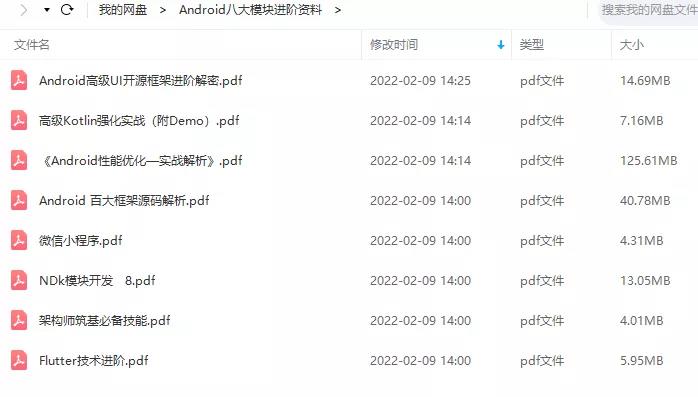
相对于我们平时看的碎片化内容,这份笔记的知识点更系统化,更容易理解和记忆,是严格按照知识体系编排的。
一、架构师筑基必备技能
1、深入理解Java泛型
2、注解深入浅出
3、并发编程
4、数据传输与序列化
5、Java虚拟机原理
6、高效IO
……
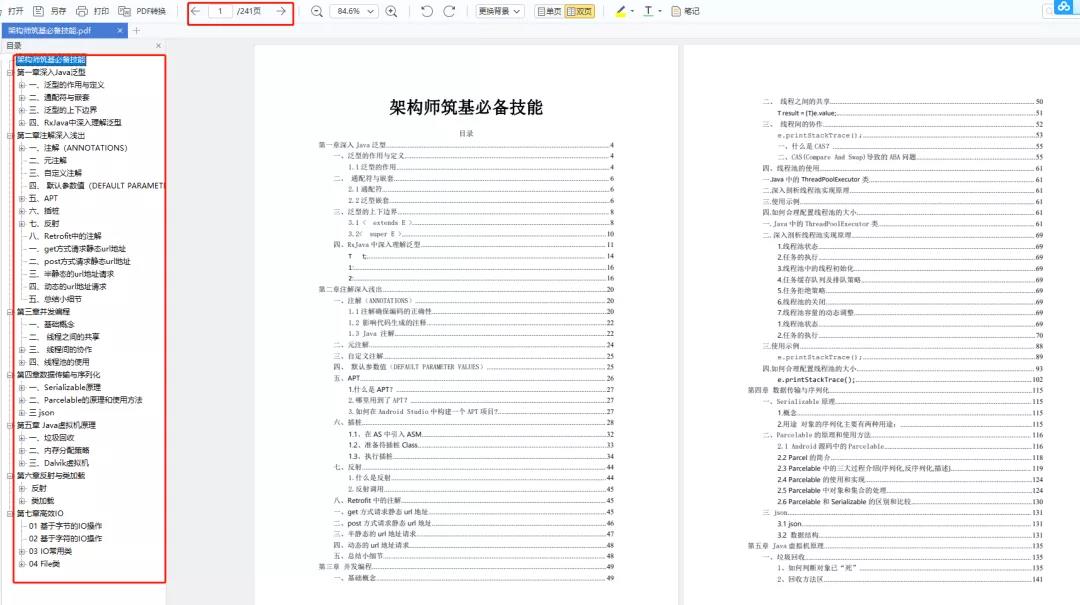
二、Android百大框架源码解析
1.Retrofit 2.0源码解析
2.Okhttp3源码解析
3.ButterKnife源码解析
4.MPAndroidChart 源码解析
5.Glide源码解析
6.Leakcanary 源码解析
7.Universal-lmage-Loader源码解析
8.EventBus 3.0源码解析
9.zxing源码分析
10.Picasso源码解析
11.LottieAndroid使用详解及源码解析
12.Fresco 源码分析——图片加载流程
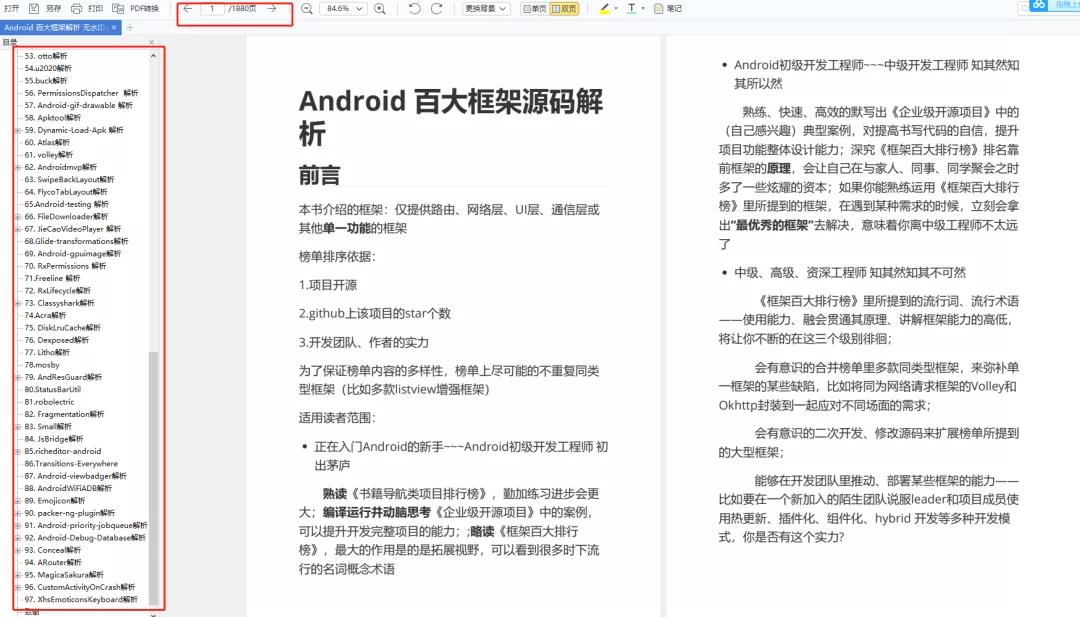
三、Android性能优化实战解析
- 腾讯Bugly:对字符串匹配算法的一点理解
- 爱奇艺:安卓APP崩溃捕获方案——xCrash
- 字节跳动:深入理解Gradle框架之一:Plugin, Extension, buildSrc
- 百度APP技术:Android H5首屏优化实践
- 支付宝客户端架构解析:Android 客户端启动速度优化之「垃圾回收」
- 携程:从智行 Android 项目看组件化架构实践
- 网易新闻构建优化:如何让你的构建速度“势如闪电”?
- …
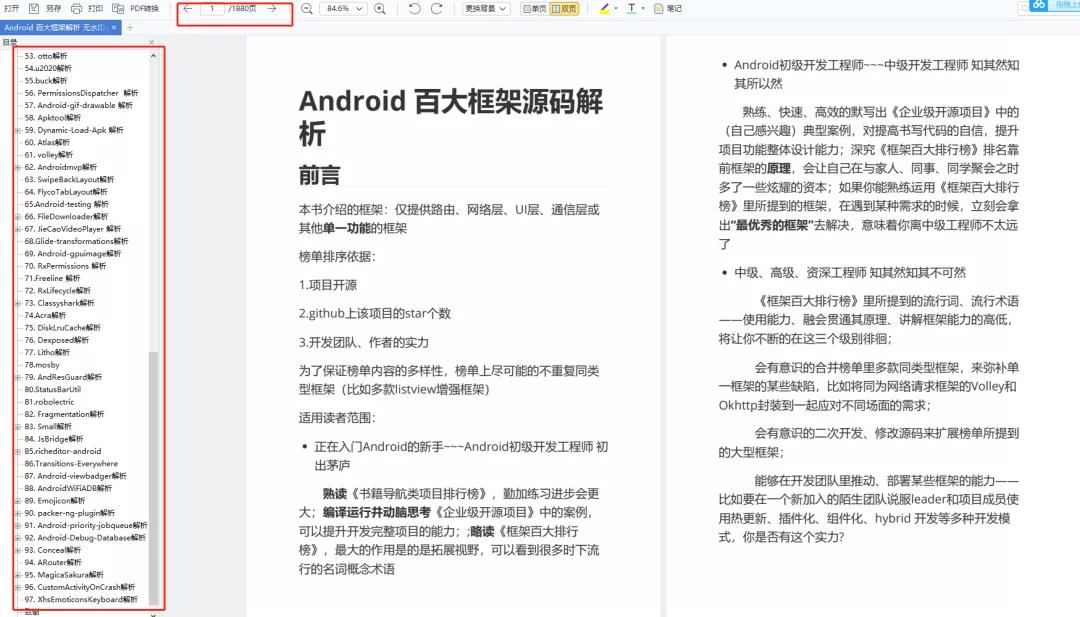
四、高级kotlin强化实战
1、Kotlin入门教程
2、Kotlin 实战避坑指南
3、项目实战《Kotlin Jetpack 实战》
-
从一个膜拜大神的 Demo 开始
-
Kotlin 写 Gradle 脚本是一种什么体验?
-
Kotlin 编程的三重境界
-
Kotlin 高阶函数
-
Kotlin 泛型
-
Kotlin 扩展
-
Kotlin 委托
-
协程“不为人知”的调试技巧
-
图解协程:suspend
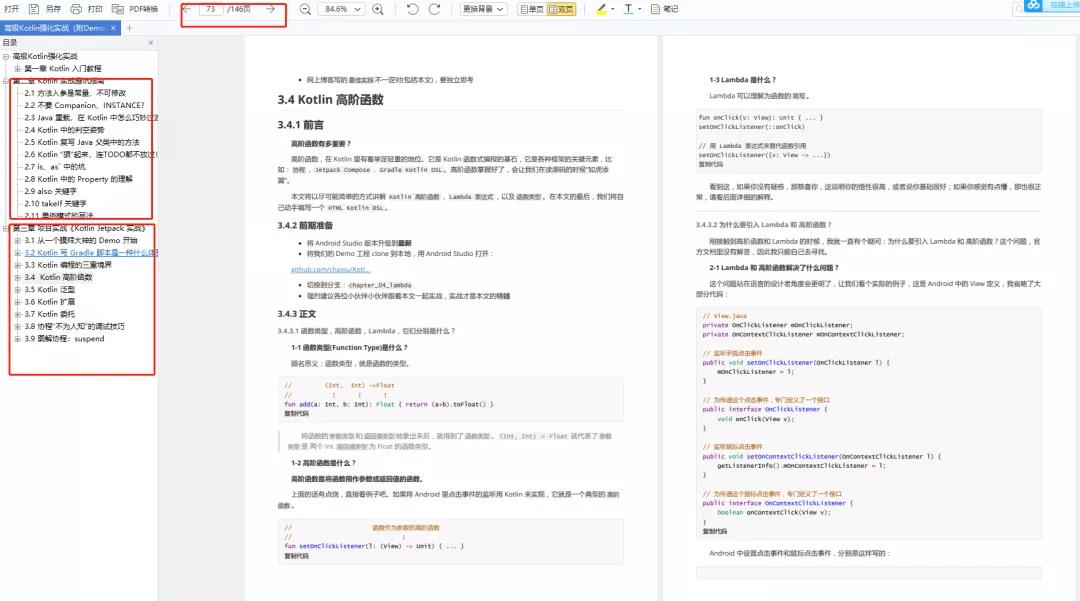
五、Android高级UI开源框架进阶解密
1.SmartRefreshLayout的使用
2.Android之PullToRefresh控件源码解析
3.Android-PullToRefresh下拉刷新库基本用法
4.LoadSir-高效易用的加载反馈页管理框架
5.Android通用LoadingView加载框架详解
6.MPAndroidChart实现LineChart(折线图)
7.hellocharts-android使用指南
8.SmartTable使用指南
9.开源项目android-uitableview介绍
10.ExcelPanel 使用指南
11.Android开源项目SlidingMenu深切解析
12.MaterialDrawer使用指南
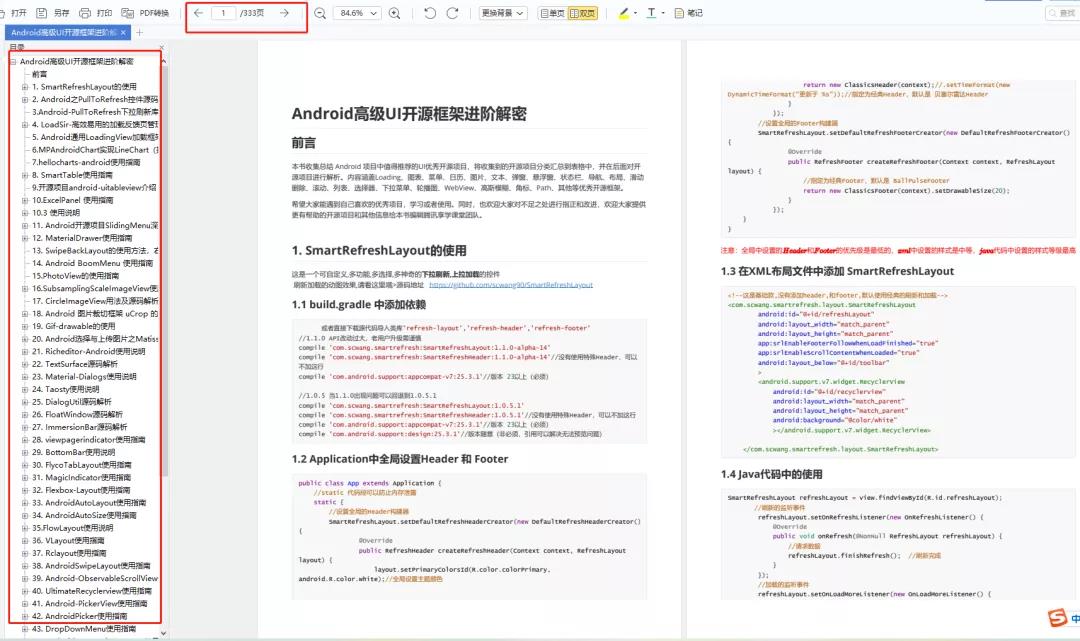
六、NDK模块开发
1、NDK 模块开发
2、JNI 模块
3、Native 开发工具
4、Linux 编程
5、底层图片处理
6、音视频开发
7、机器学习
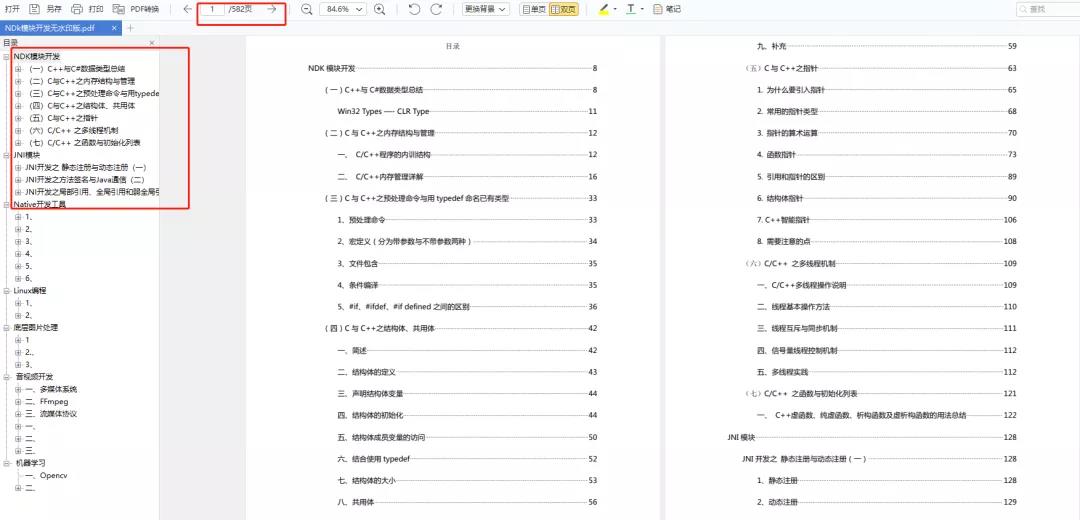
七、Flutter技术进阶
1、Flutter跨平台开发概述
2、Windows中Flutter开发环境搭建
3、编写你的第一个Flutter APP
4、Flutter开发环境搭建和调试
5、Dart语法篇之基础语法(一)
6、Dart语法篇之集合的使用与源码解析(二)
7、Dart语法篇之集合操作符函数与源码分析(三)
…
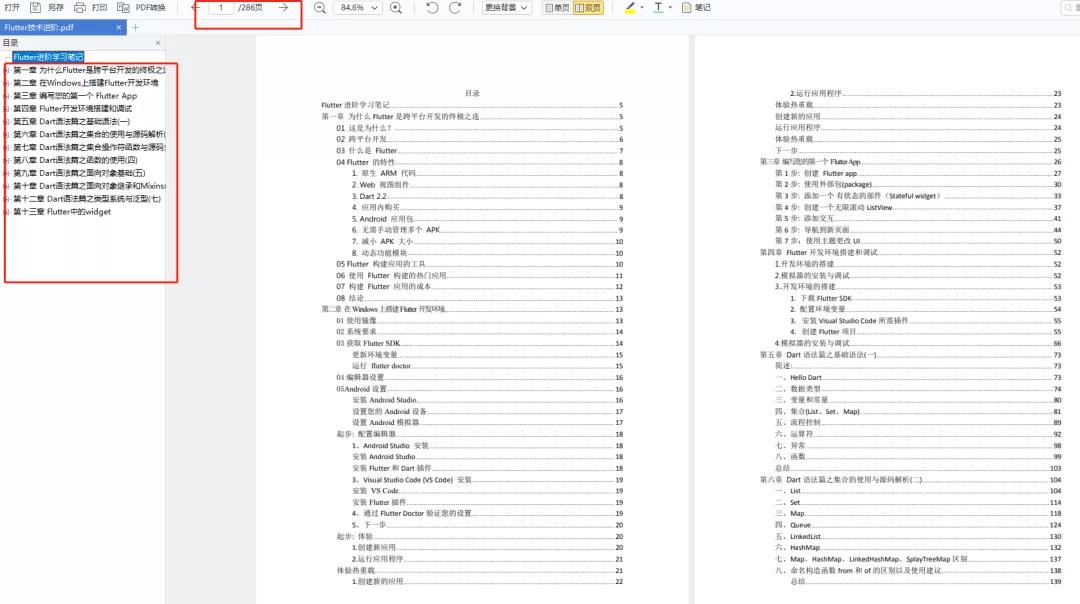
八、微信小程序开发
1、小程序概述及入门
2、小程序UI开发
3、API操作
4、购物商场项目实战……
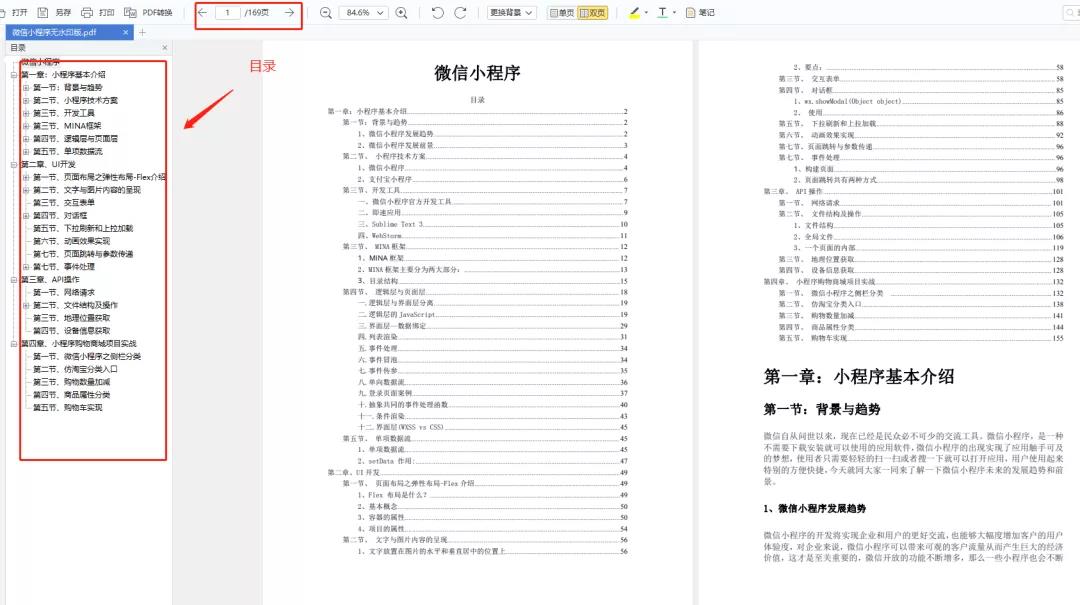
全套视频资料:
一、面试合集
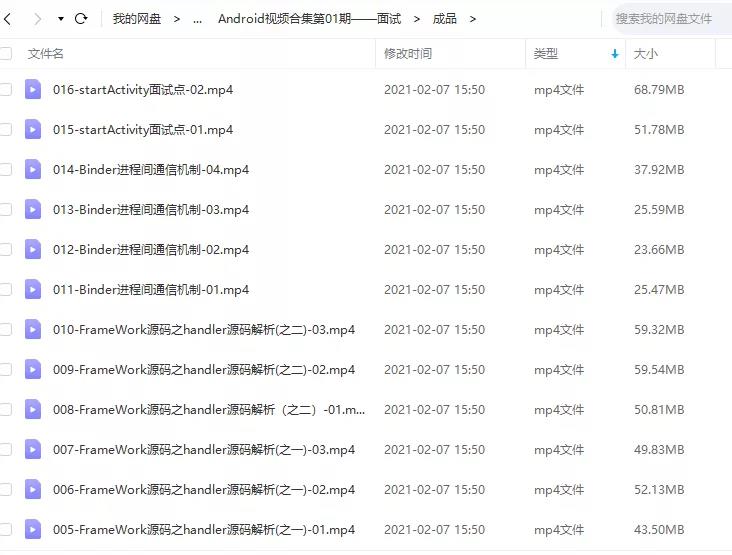
二、源码解析合集
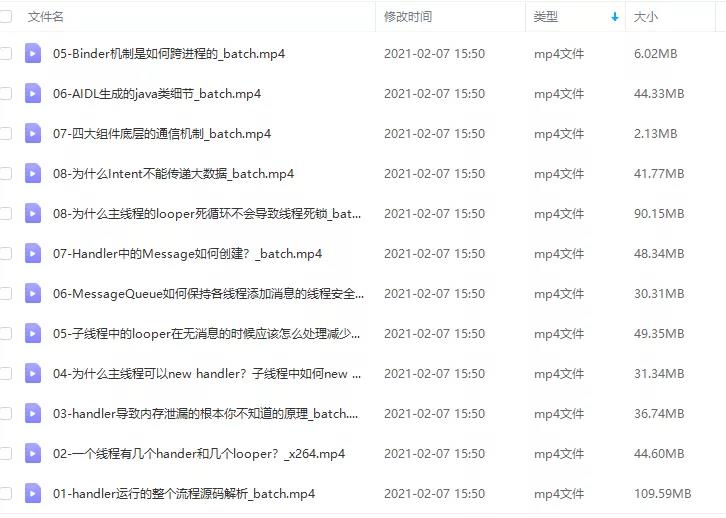
三、开源框架合集
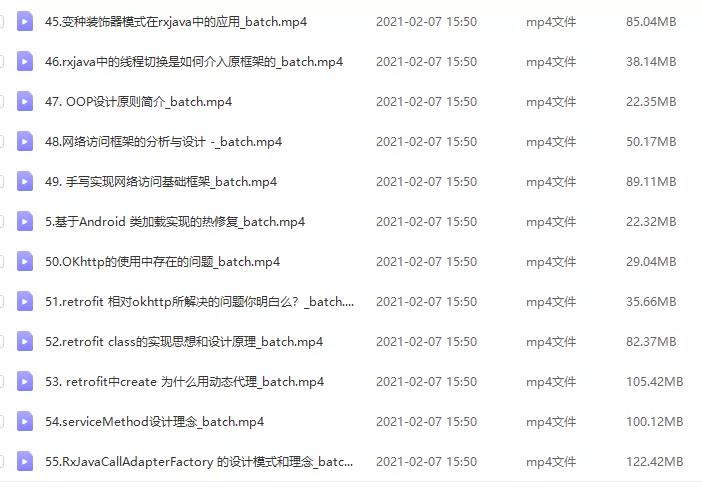
欢迎大家一键三连支持,若需要文中资料,直接点击文末CSDN官方认证微信卡片免费领取【保证100%免费】↓↓↓

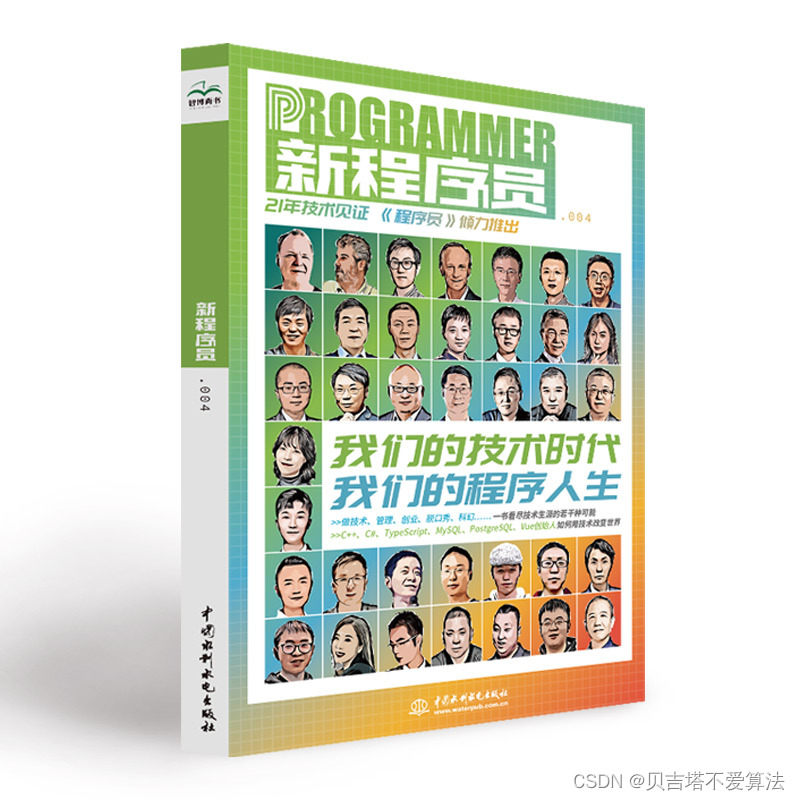 开发者涨薪指南
开发者涨薪指南
 48位大咖的思考法则、工作方式、逻辑体系
48位大咖的思考法则、工作方式、逻辑体系
以上是关于Android 无障碍服务 performAction 的调用过程分析的主要内容,如果未能解决你的问题,请参考以下文章